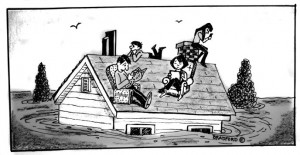 The Treasury Department’s Home Affordable Refinance Program (HARP) could double participation in the four year old program by homeowners seeking to refinance with small changes that would help 3.4 million homeowners take advantage of today’s record low mortgage interest rates, saving them some $14 billion in annual interest costs, according to an analysis by two CoreLogic economists published today.
The Treasury Department’s Home Affordable Refinance Program (HARP) could double participation in the four year old program by homeowners seeking to refinance with small changes that would help 3.4 million homeowners take advantage of today’s record low mortgage interest rates, saving them some $14 billion in annual interest costs, according to an analysis by two CoreLogic economists published today.
Some 2.4 million borrowers, representing 4.5 percent of all mortgages, are eligible for the HARP 2.0 program but have failed to participate in the program, either because they owe more on their mortgages than they are worth or simply don’t know about the program. Their average interest rate is 5.96 percent, 257 basis points above the going rate of 3.39 percent in the October 11 PMMS survey. The CoreLogic economists estimate their average monthly savings would be $349, or $10 billion a year.
Another million borrowers are frozen out of HARP because they originated their loans after the program’s cut-off date for acquisition by the GSEs, May 31, 2009. These borrowers, representing 2 percent of outstanding mortgages, pay an average interest rate of 5.22 percent. If they could refinance at current rates, they could cut their monthly payments by $333 for an annualized savings of more than $4 billion a year.
“These borrowers paid for the refinance pre-payment option but cannot exercise it. This means they are paying above market rates for their mortgages, and the forgone savings from refinancing are a forgone economic stimulus,” wrote the CoreLogic economists, Sam Khater and Molly Boesel.
The Home Affordable Refinance Program (HARP), originally introduced in 2009 to make it easier for borrowers whose mortgages are held by Fannie Mae or Freddie Mac to refinance and take advantage of lower rates, was redesigned in 2012 to increase the share of refinancing homeowners in high negative equity states. A total of 1.54 million homeowners have refinanced under HARP and HARP 2.0 since its launch in 2009, however fewer than 100,000 refinanced under HARP in September despite current record low mortgage rates. Recent rate declines have increased the spread between rates on new loans and outstanding loans to more than 100 basis points, the highest level in more than a decade.



